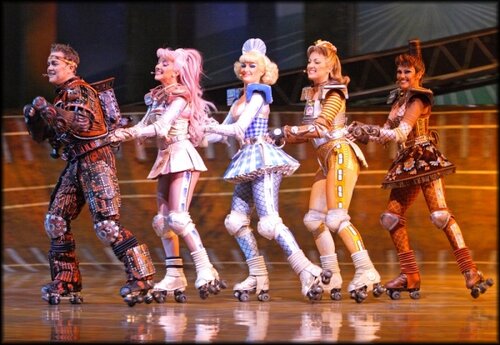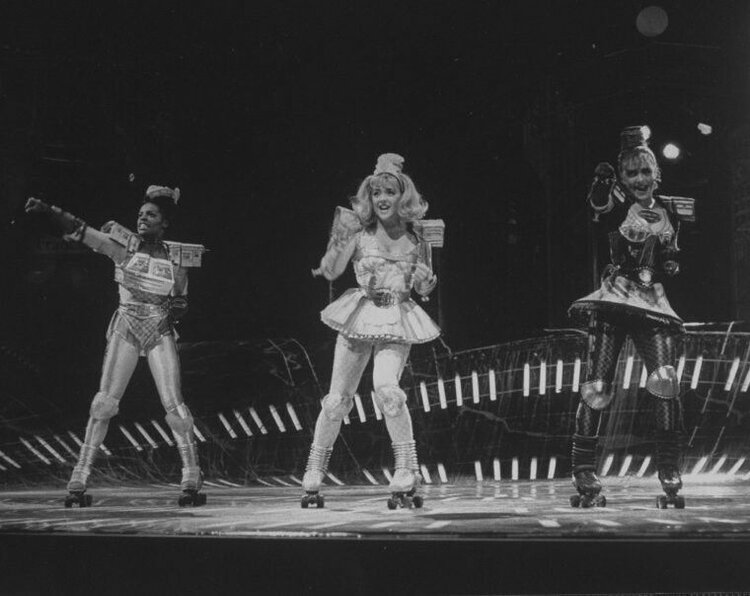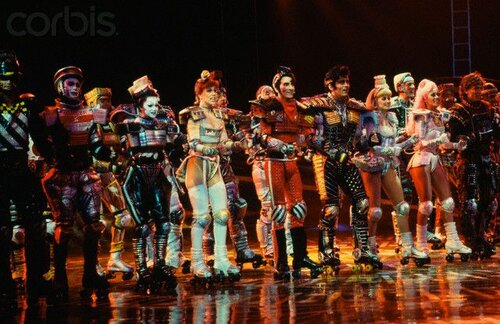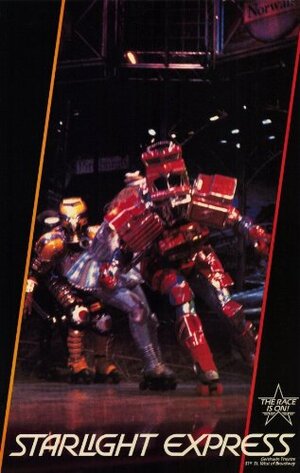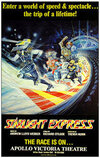Remembering Starlight Express
Composer Andrew Lloyd Webber often gravitates toward writing musicals that are both family friendly and that will ignite the curiosity of the kid in us all. Joseph and the Amazing Technicolor Dreamcoat and Cats continue to be revived, again and again, particularly for their universal appeal. And yet, perhaps the most family-friendly and imaginative of all of Webber’s musicals to date is one about anthropomorphized racing trains. I am, of course, referring to Starlight Express, which opened in London’s West End on March 27, 1984 where it ran for 7,409 performances. The musical came to Broadway’s Gershwin Theatre in 1987, and despite having the London creative team in tow, it made the journey with major revisions from its London incarnation. Starlight Express ran on Broadway for 761 performances and won a singular Tony Award for John Napier’s costume design.
So where does the impetus come from to write a musical about racing trains? The genesis of the musical came from a combination of two projects that Webber had been involved with, as well as a musical single he had written. One was an animated television series that would musicalize the popular children’s book series Thomas the Tank Engine, the other was an animated film version of Cinderella where a competition was held between train engines, the winner receiving the honor of pulling the royal train. The music single I refer was called “Engine of Love,” that failed to ignite on the radio in 1977, but it, along with other two examples, would definitely underscore Webber’s fascination with locomotives and it seems inevitable that the composer would ultimately produce a musical that featured this form of transport in some way. In 1981, Webber teamed with lyricist Richard Stilgoe who began fiddling with what would eventually become Starlight Express.
By 1983, the musical was taking shape, with director Trevor Nunn and choreographer Arlene Phillips coming onboard. Phillips was the one who suggested that this musical about racing trains be staged on roller skates, giving each individual character (or train) the autonomy to move as its own unique entity while still suggesting the speed and flow of a locomotive. This seemed like an ideal solution for telling the unique story, though it did lead to Starlight Express being known predominantly as the “musical on roller skates.” For this to work, set designer John Napier created a set that was a series of bridges, tracks, and ramps that encircled the theatre, creating the environment for trains competing in pairs (an engine and a car) battling in heats for the championship. Napier also provided the production’s futuristic, metallic looking costumes, and David Hersey providing the sparkle and flash lighting. Visually, Starlight Express was a production to behold in both its London and Broadway incarnations.
The general plot (what little there was) for Starlight Express was simple. A little boy playing with his train set imagines a race between a series of locomotives, including reigning champion “Greaseball,” a dilapidated steam engine named “Rusty” who is all heart, a dining car named Dinah, a smoking car named Ashley, etc., as well as series of other engines and cars. The boy calls himself “Control” and designs all the rules of the race and tries to be a voice of reason. Much like the musical Cats, we learn a little about each of these characters and their reasons for wanting/needing to win this race, as well as about their relationships to one another. We move between these introspective looks at character and the actual heats of competition, with one winner named victorious in the end. The London production starred Stephanie Lawrence, Ray Shell, Frances Ruffelle, Jeffrey Daniel, and Jeff Shankley.
For the Broadway production of Starlight Express, some pretty big changes were made to the piece. The trains were now racing across the United States, competing for a trophy prize known as “The Silver Dollar.” Webber found a way to interpolate that failed song from 1977 “Engine of Love” and also added another song called “Make Up My Heart.” The American version would also feature one-less Broadway’s Gershwin Theatre was gutted to accommodate a new version of Napier’s complex set, full of additional bells and whistles that took Starlight Express to a whole new level of Broadway spectacle. The Broadway was led by Ken Ard, Greg Mowry, Jane Krakowski, Andrea McArdle, Robert Torti, Steve Fowler, Jamie Beth Chandler, and Reva Rice.
Of all of Andrew Lloyd Webber’s scores for musical theatre, Starlight Express is the most tethered to the 1980s in its pop music sound (though it does incorporate other musical styles throughout, particularly the blues). Though most people will agree it is not his most-impressive work, it nonetheless has a magical, buoyant quality that is perfect for the story being told. Standout musical numbers include the title song, “Only You,” and “Light at the End of the Tunnel.” Starlight Express is one of the musicals that just will not succeed unless it is done with spectacle, so it is unlikely that you will see a revival at your local community theatre or high school. However, if you have a chance to see a production that can provide that magic, you should go. When all of the elements come together, Starlight Express is escapist fun that may not change your world, but it might just lighten and brighten your heart.
Mark Robinson is the author of the two-volume encyclopedia The World of Musicals, The Disney Song Encyclopedia, and The Encyclopedia of Television Theme Songs. His forthcoming book, Sitcommentary: The Television Comedies That Changed America,will hit the shelves in October, 2019. Hemaintains a theater and entertainment blog at markrobinsonwrites.com.

